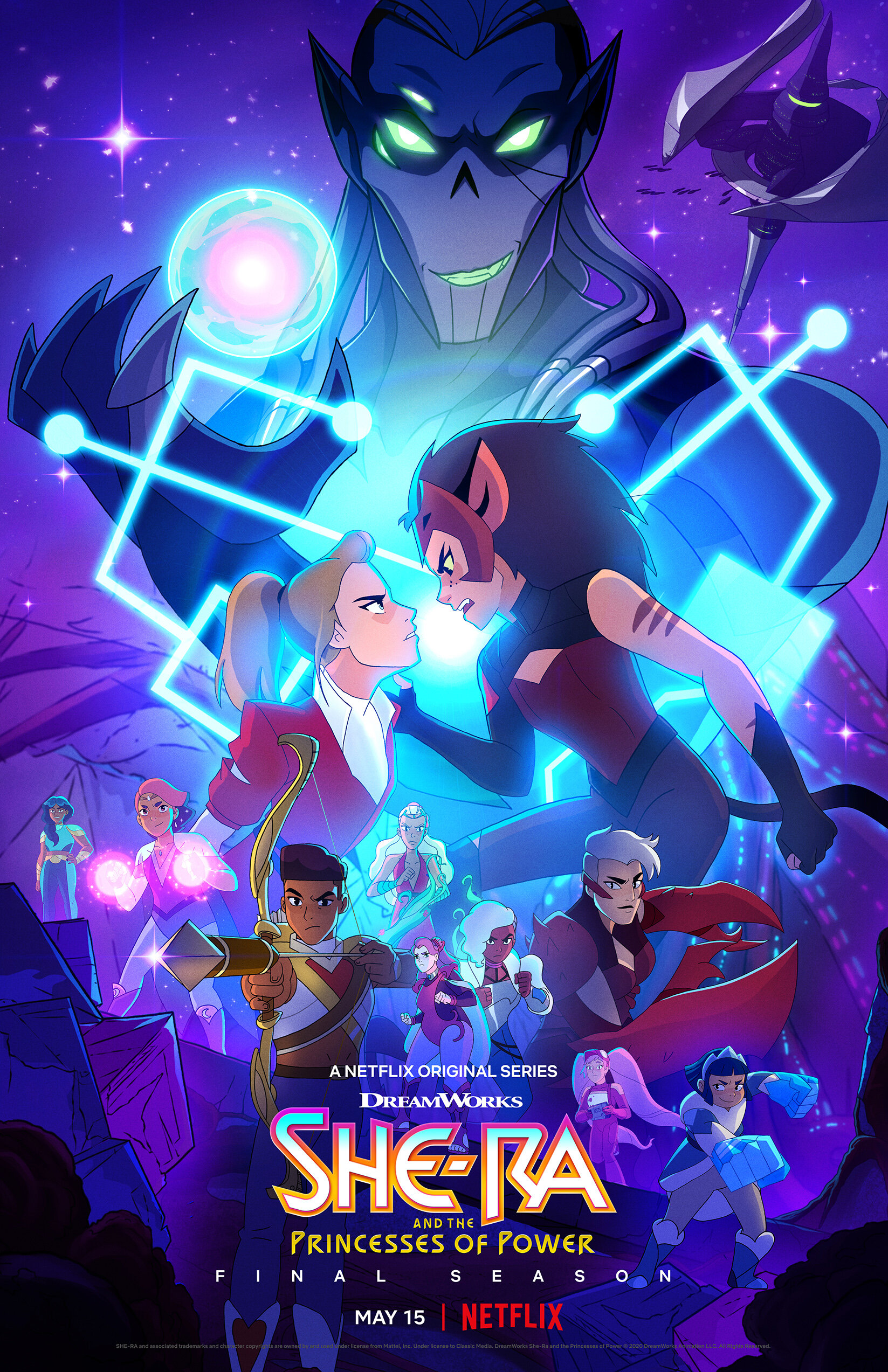She-Ra and the Princesses of Animism
This post is about the Netflix show She-Ra and the Princesses of Power, and will include show spoilers. You have been warned.
Netflix’s She-Ra and the Princesses of Power was first released in 2018, and was a reboot of the 1985 television series She-Ra: Princesses of Power. The Netflix version of She-Ra has much of interest to discuss, including being immensely inclusive, with a diverse cast of characters. People of colour and the LGBT+ community are well-represented to such an embedded extent that they never stand out as token or unique, but are simply present and never overly-explained. And while I would love to have a post raving about their ability to be both representative of the original 80’s show, while being an amazing example of equal and embedded representation, that’s not exactly what I have in mind to do today.
She-Ra and the Princesses of Power is set on the planet of Etheria, following the lives and experiences of Adora and Catra, two orphans who grew up together under the influence of the evil Horde. Eventually, Adora leaves and discovers that she had been lied to about the true nature of the Horde, and joins the Rebellion with Bow and Princess Glimmer. She helps to build the Princess Alliance, a group of princesses to help fight the Horde. On Etheria, princesses also have magic powers, including elemental magic such as growing and controlling plants or water. She discovers a magic sword that allows her to become She-Ra, a princess with great power who is destined to protect Etheria. Feeling abandoned by her friend who left the Horde, Catra, Adora’s once best-friend, becomes her direct enemy.
Consistently through the show, She-Ra upholds a dichotomy between magic and technology. Some shows end up combining the two in the end – the magic is a form of tech – but She-Ra never does this. Instead, technology is always set in contrast to the magic of the world. Starting in the first season, the show introduces the notion of the First Ones, an older group of people said to be the first to colonise the world of Etheria. The First Ones are associated with complicated technology, the knowledge of its creation and control lost to time. Their buildings are filled with strange tech, including robots and holograms. Likewise, the evil Horde frequently fights with big armour and attacking bots. The technology is set in direct contrast to the Rebellion, and the other elements of the land of Etheria, where the emphasis is on nature, and the Princesses fight with magic.
The contrast between technology and magic came to a head with the final antagonist, Horde Prime. Horde Prime, the alien conqueror who destroys worlds in his wake, represented the epitome of technology. The technologically knowledgable princess, Entrapta, frequently comments on the intricacy of Horde Prime’s tech. His space ship is pristine white with neon green accents, everything metal and clean. Meanwhile, the Rebellion Princesses are hiding in large trees, encased in nature. When the Adora, now Catra in tow, and her friends go in search of a way to ultimately defeat Horde Prime, they find his weakness is magic. The magic of Etheria had been controlled and stripped from the world by the First Ones, altered by the technology they introduced.
Magic and Technology are always at odds.
But Horde Prime is more than just technologically grandiose. He also echoes a lot of Christian language in his words. He refers to his followers as “little brothers” and “little sisters”. At one point, he tells Hordak that “I made you in my image”, an echoing of Genesis. His intention behind the destruction of the universe he has wrecked is due to an intention to stop all war, constantly referring to the need for peace. His almost always constant calm exterior, constant call for peace, and other phrasings leaves a strong resemblance to Christianity.
In contrast, the magic of Etheria, which is always pinned against the Christianity-Horde, is wild and everywhere. When discussing the nature of the magical Princess She-Ra, old forest-dwelling Madame Razz talks about how it is all around, and in everything. In the animation, the magic in the air is depicted as light glows which float about the air.
Screenshot from She-Ra demonstrating the presence of magic (the yellow dots around Adora’s face).
In the end, it is magic which defeats Horde Prime – the utter release of the magic which had been penned up and withheld from the world by the tech of the First Ones. It flows out suddenly, and with it She-Ra defeats the technology, sending it fall away.
In the greatest demonstration of magic and nature over Christianity and tech, is the transformation of Horde Prime’s ship into a giant tree, floating now in the air above Etheria.
The magic being in everything, everywhere in the world recalls some forms of animism – love and magic and a kind of soul to the world that follows the trees, the grass, the flowers, and the animals. In a wonderful turn from what happened on our Earth, animism and magic defeated Christianity and technology. The First Ones mimic much of humans now – using the technology to manipulate the environment to our own purposes. Inevitably, we will become Horde Prime – determined to serve peace at any price, without care of what we destroy in our wake. Let us find the love and magic in the environment we have – let us be She-Ra.


